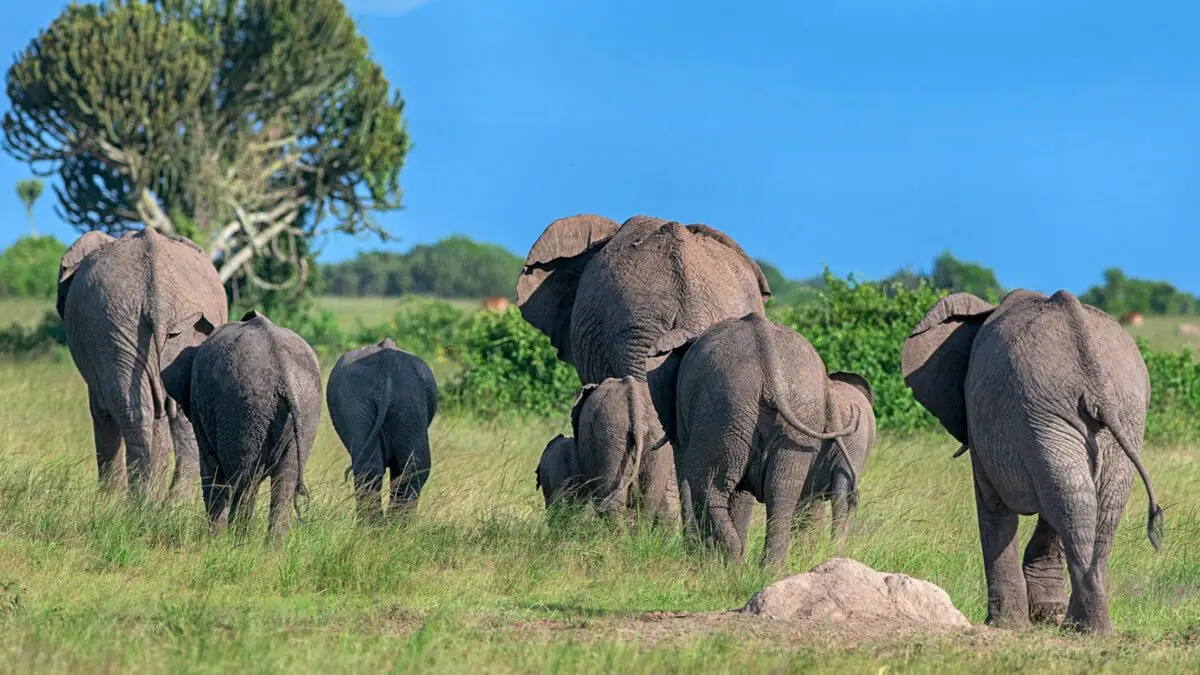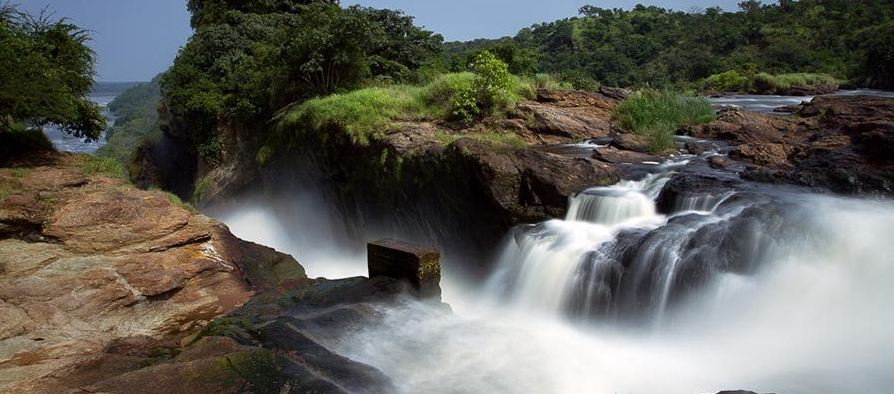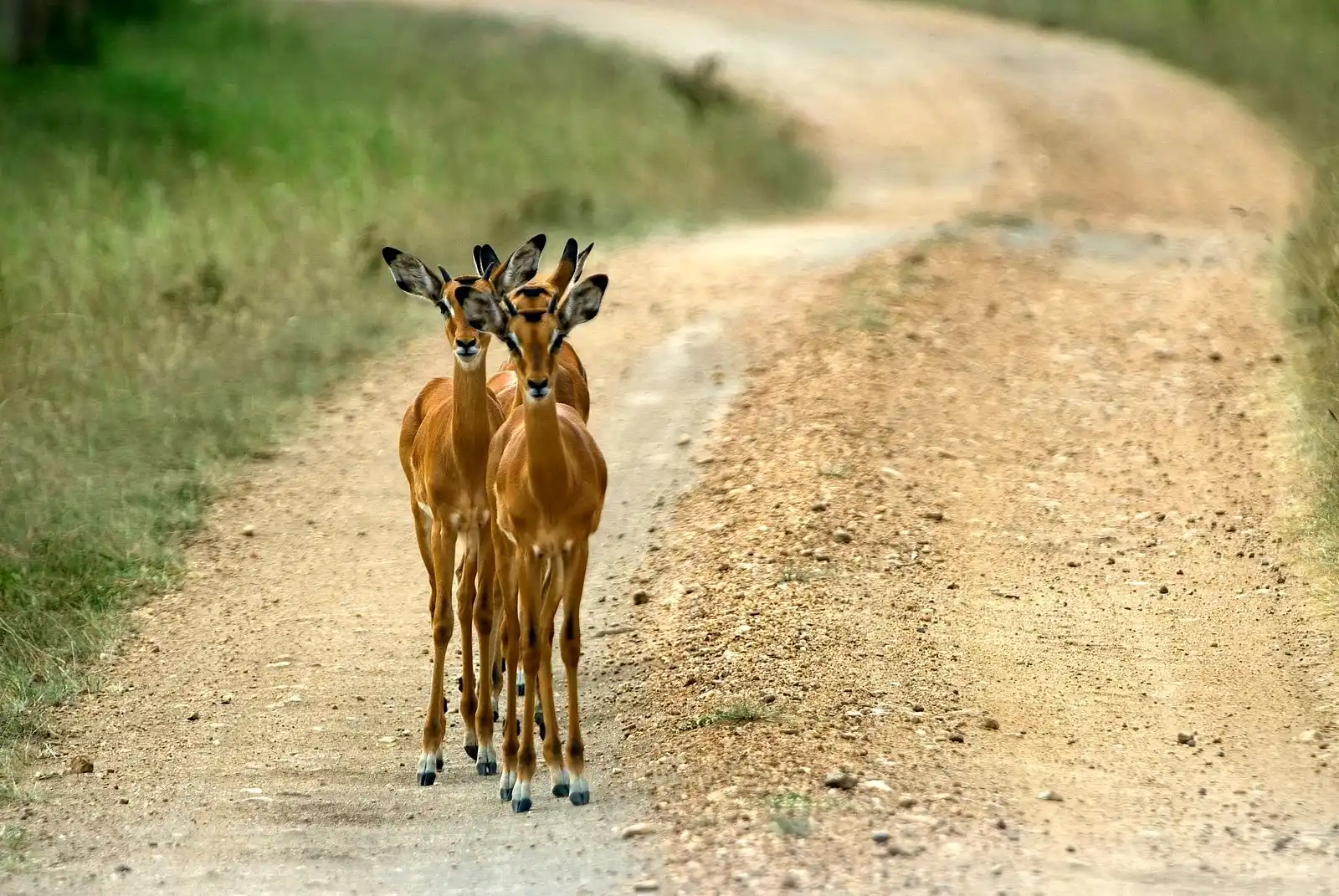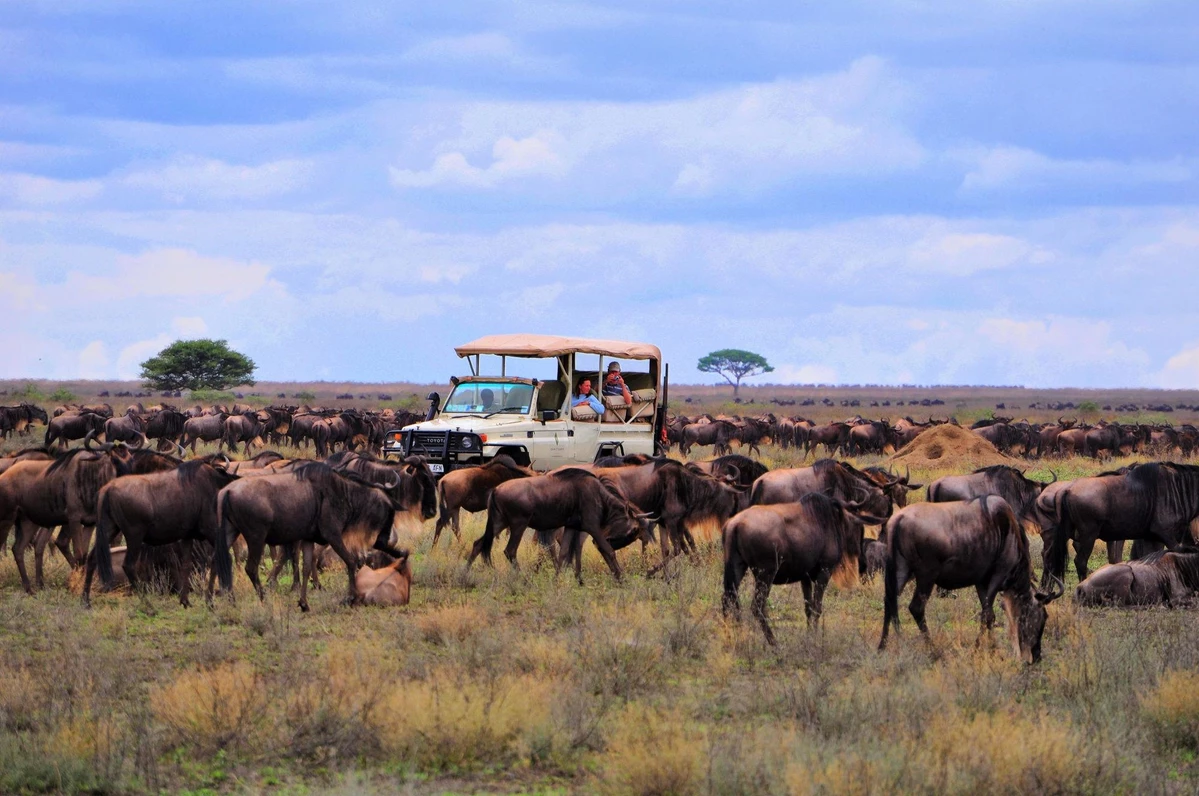Table of Contents
ToggleThere is more to a Uganda safari than seeing the gorillas. Most Uganda parks has a great variety of other fascinating wildlife. These include the hippo, a huge water-loving animal whose Greek name hippopotamus translates as ‘river horse’. Weighing up to 2600kg, hippos are the world’s third largest land mammal. They are easily identified by their portly bodies, cavernous mouths, fearsome teeth and custom of spending long daylight hours submerged in rivers or lakes. No safari would be complete without the distinctive sound of hippos snorting or grunting. And if you are wondering where to see and hear hippos in Uganda, here we introduce you to the best places to encounter them.
Where to See Hippos in Uganda?
The best places to see hippos in Uganda are in Queen Elizabeth National Park, Murchison Falls National Park, Lake Mburo National Parks, and Semuliki National Park.
1. Queen Elizabeth National Park (QENP)
A safari to Queen Elizabeth National Park’s diverse mosaic of savannah grasslands and wetland habitats is easily combined with gorilla trekking adventure in the jungle of nearby Bwindi Impenetrable Forest National Park. QENP is home to over 5000 hippos.
Hippos are native to 38 countries in Africa with an overall estimated population of between 115,000 and 130,000 wild hippos, according to the IUCN’s 2016 assessment.
One of the absolute highlights of any trip to Queen Elizabeth National Park is a 2 hour boat trip on the beautiful Kazinga Channel which is home one of the world’s densest concentrations of hippos – around 2000 of them! It is among the best places to see hippos in Uganda and Africa, along with Nile crocodiles, buffalos, elephants, and many fantastic waterbirds.
The Kazinga Channel is essentially a short river that runs between Lake George and Lake Edward. The channel is about 20 miles long and pretty shallow: only 8m deep at the deepest point.
- Best time to see hippos in Queen Elizabeth National Park: Boat trips are available and hippos present all year round. Most travellers time their visit around the peak mountain gorilla trekking season from December to February and June to August.
2. Murchison Falls National Park
Uganda’s largest park, Murchison Falls National Park has the world’s strongest waterfall, formed by the world’s longest river (Nile) as it funnels through a narrow 8 meter wide gorge in the Rift Valley escarpment. Boat cruise to the base of this explosive waterfall offer great wildlife viewing, and you are sure to see many pods of hippo basking in the shallows of the longest river in the world.
These guys might look friendly and peaceful, chilling out in the water, but the hippo is actually the deadliest large land mammal in Africa. Each year, hippos kill an estimated 500 people across Africa. They are angry and aggressive creatures, with very long and sharp teeth. And you wouldn’t want to have one sit on you: at up to 2600 kilograms they can easily crush you to death.
- Best time to see hippos in Murchison Falls National Park: This is a year-round safari destination and hippo sightings are not significantly affected by season changes.
3. Lake Mburo National Park
The scenic little Lake Mburo National Park, close to Kampala, is home to several wildlife species not easily seen elsewhere in Uganda. These include plains zebras, elands, and impalas.
Although elephant are absent from the park, there is plenty of other wildlife to see, including Rothschild’s giraffe, Cape buffalo and Waterbuck. Lake Mburo also offers boat rides which give you an opportunity to several pods of hippos along the lake shores. While they are not as many here as in Murchison Falls and Queen Elizabeth, there is quite an impressive concentration here as well.
- Best time to see hippos in Lake Mburo: This is also a year-round safari destination and hippo sightings are not significantly affected by season changes.
4. Semiliki National Park
Semuliki National Park is one of the most beautiful and remote wilderness regions in Uganda. The park is situated near the snow-capped “Mountains of the Moon”, about (355 km) 6-hour drive west of Uganda’s capital, Kampala. Unspoiled by mass tourism, Semuliki is considered by many (especially avid birders) to be one of Uganda’s best-kept secrets.
Here, you can find hippos on a boat ride on Semiliki River into Lake Albert. The hippo population here reduced due to the conflicts in DR Congo in which various animals were harmed. However both Uganda and Congo are making efforts to conserve the hippo population along Semiliki River.
Other Best Places To See Hippos In Africa
1. Katavi National Park In Tanzania
Situated in the far west of Tanzania, the obscure Katavi National Park attracts a tiny fraction of the visitor volumes associated with the likes of the Serengeti and Ngorongoro Crater. It is arguably the very best place to see hippos in Africa, especially toward the end of the Dry season, when countless hippos might gather in one pool. This often leads to dramatic territorial disputes that frequently involve vicious head-butting, clashing teeth and bloody injuries.
2. Akagera National Park In Rwanda
Akagera National Park is Rwanda’s only safari destination where you can see the Big Five. This Rwanda safaris park features a beautiful wetland complex fed by the Akagera River on the border with Tanzania. Hippo sightings are almost guaranteed on boat trips on Lake Ihema.
Hippos can be seen throughout the year, but if you are combining a safari with gorilla trekking in Rwanda, aim for June to September or mid-December to mid-February
3. Nyerere National Park In Tanzania
Tanzania’s largest park, Nyerere National Park is bisected by the longest river in the country. This is the Rufiji, a typical African waterway whose wide sandy course is lined by beautiful borassus palm trees and lush forest.
This impressive stretch of river also hosts one Africa’s densest hippo population, and you will see plenty of these aquatic giants over the course of a single boat tour, along with elephants, giraffes, buffalos and some impressively bulky Nile crocodiles.
4. Lake Naivasha In Kenya
Lake Naivasha National Park is the best place in Kenya to see hippos. It is home to approximately 1,500 hippos and the sightings are almost guaranteed on a boat cruise. This park is situated near Lake Nakuru and a safari here is often combined with Masai Mara National Reserve.
5. Okavango Delta In Botswana
The world’s largest inland delta and one of Africa’s seven natural wonders comprises 22,000km of permanent and seasonal wetlands fed by the Okavango River as it drains into the sandy Kalahari soils. Expectedly, Okavango is hosts one of Africa’s largest hippo populations and you’ll see plenty as you are poled through the Delta’s channels in a dugout canoe known as mokoro.
6. Liwonde National Park In Malawi
This underrated Malawi safari park is a Big Five safari destination dominated by the Shire River as it flows south from Lake Malawi to its confluence with the Zambezi. Boat safaris on this African wild waterway are a real treat, not least because it home to an extraordinary density of hippos, as well as offering great birdwatching and elephant watching.
7. Mana Pools National Park In Zimbabwe
The name “Mana” means “four” in the local Shona languageand applies to the four pools; Green Pool, Chine Chisasiko, and Long Pool. This Zimbabwean counterpart to Lower Zambezi is situated on the opposite side of the same river and is equally productive for hippo viewing. Canoe trips are available, but the main specialty at Mana Pools is walking safaris, which often yield closeup encounters with hippos and other heavyweights such as lions and elephants.
8. Lower Zambezi National Park In Zambia
This park lies on the northern bank of River Zambezi as it flows along the border with Zimbabwe. It offers Africa’s best self-propelled canoe safaris that guarantee close-up encounters with hippos.
9. South Luangwa National Park In Zambia
This is the best know safari destination in Zambia. It offers great lion, leopard and elephant watching, but the waterway for which it is named is also one the best places to see hippos in Africa. As with Tanzania’s Katavi National Park, hippo viewing can be remarkable at the end of the Dry season when huge numbers concentrate in the river’s few remaining pools.
10. Kruger National Park In South Africa
South Africa’s best Big Five safari destination is home to most iconic safari animals, including hippopotamus, which can be seen in all year-round larger dams and rivers.
More Interesting Facts About Hippos In Uganda & Africa
- Hippos spend their days submerged in the cool water with only nostrils, eyes, and ears exposed.
- Periodically they duck back under the surface of water and then bobble back up again, blowing excess water from their nostrils and flicking it with their little pink ears.
- Hippos sometimes remain submerged for extended periods of time; but they must resurface to breathe at least every 3-5 minutes.
- Sometimes you can witness them engaged in rough play with one another, mouths wide open to display their incredibly long canine teeth.
- An adult hippo’s skin is thick, bulletproof and accounts for around 25 percent of their weight – but it is still sensitive to sunburn and dry out.
- The main reason hippos stay submerged in water during the day is due to their vulnerable skin which seems unable to stand the effects of the strong equatorial African sun.
- In fact, hippos’ skin secretes a pinkish liquid that acts as a sunscreen to protect it from ultraviolet rays. This is why it is said that hippos turn pink in the sun.
- During the night, these stout animals finally emerge from their water bed and graze by starlight under the cool relief of night.
- In spite of their massive size, hippos are quite quick on the ground and can run faster than a human.
- They have been known to travel many miles from their pool while grazing, but by the time sunrise burns through the morning haze, these portly beasts will have taken refuge once again in their pool retreat.









